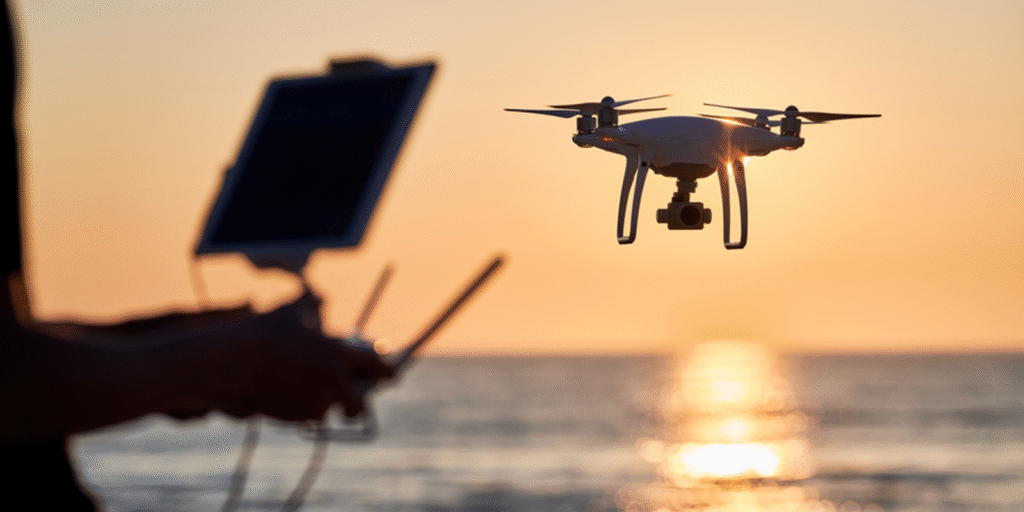Picture a river in British Columbia where the water runs fast, but beneath the surface salmon are struggling.
But, rising temperatures, damaged riverbanks, and blocked passages are threatening their survival.
In British Columbia, these salmon are more than fish. They are part of BC’s cultural identity, a key food source, and a cornerstone of ecosystems.
The challenge is that many risks are hidden such as erosion, blocked channels, or poor shading along rivers. These are not always visible until the damage is done. That is why new technology is changing the way conservation teams work. LiDAR is giving scientists and engineers a bird’s-eye view of habitats, turning invisible risks into clear data.
At Rekon, we have seen how this technology supports better decision making. With accurate information, restoration projects become faster, smarter, and more effective.
What Is LiDAR and Why Does It Matter for Salmon?
LiDAR stands for Light Detection and Ranging. It uses laser pulses from aircraft or drones to create detailed 3D maps of the earth’s surface. These maps capture fine details of rivers, floodplains, and forests.
For salmon habitats, LiDAR is a game changer. It reveals where erosion is threatening banks, where vegetation is missing, and where barriers are blocking salmon migration. Traditional surveys cannot cover such wide areas with the same level of detail.
The State of Salmon Habitats in BC
BC salmon face serious threats. According to Fisheries and Oceans Canada, many Pacific salmon populations are at risk of decline. Habitat degradation from logging, urban development, and climate change is a major cause. A World Wildlife Fund Canada report found that freshwater ecosystems in BC are under pressure from rising temperatures and human activity.
These challenges require precise data. Guesswork is not enough. LiDAR provides the level of clarity needed to act quickly and effectively.
4 Ways LiDAR Supports Salmon Conservation
Mapping Rivers and Floodplains
LiDAR captures the shape of riverbeds and floodplains with high accuracy. This helps scientists understand how water flows, where it spreads during floods, and how habitats shift over time. In the Nimpkish River, LiDAR was used to support estuary restoration by showing areas of erosion and sediment build-up.
Identifying Barriers to Migration
Salmon depend on clear routes to travel between spawning grounds and the ocean. Barriers like blocked culverts, natural slides, or manmade structures can stop migration. LiDAR helps locate these obstacles. Once identified, engineers can design ways to reconnect the pathways.
Restoring Riparian Zones
Riparian zones are the green areas along riverbanks. They provide shade, stabilize soil, and keep water temperatures cool. LiDAR highlights sections where vegetation is missing or sparse. Restoration teams then know exactly where to replant trees or reinforce banks. Studies show that shaded streams improve salmon survival by reducing heat stress during summer.
Detecting Hidden Risks
Thermal shifts in soil or patterns of erosion are often invisible from the ground. LiDAR detects subtle changes in slope and terrain that signal risks to habitat stability. These early warnings make it easier to act before habitats collapse.
Case Studies Where LiDAR Made a Difference
The Lower Nimpkish River
A 36 square kilometer area of the Lower Nimpkish was mapped with LiDAR to support salmon habitat restoration. The data showed how the estuary had changed and where intervention was needed. This guided targeted work that improved habitat conditions for juvenile salmon.
Heart of the Fraser
In the Heart of the Fraser region, LiDAR supported projects that reconnected side channels and sloughs. Juvenile salmon gained access to vital rearing habitats. Without LiDAR, many of these channels would have remained hidden.
Local Watershed Projects
In BC watersheds, LiDAR has been used to identify erosion zones and design riparian restoration.
For example, hot spots of erosion were mapped and stabilized before they caused large-scale damage. This proactive work reduced long-term risks to salmon spawning grounds.
Why LiDAR Is More Effective Than Traditional Surveys
Traditional field surveys are valuable, but they take time and cover limited ground. Rivers can stretch for hundreds of kilometers, and walking every section is impossible. LiDAR covers these areas in hours and delivers centimeter-level accuracy.
This efficiency saves both time and money. It also ensures no critical areas are missed. For projects where salmon survival depends on quick action, this speed is essential.
The Economic and Cultural Impact of Saving Salmon
Salmon are not just important for ecosystems. They also support communities and economies. A report by the Pacific Salmon Foundation highlights that salmon contribute billions of dollars to BC’s economy through fisheries, tourism, and cultural practices. When habitats decline, both nature and people suffer.
By using LiDAR, restoration teams ensure funds are spent where they matter most. Every dollar goes toward fixing real problems, not guesswork. That level of precision protects salmon and the communities that depend on them.
The Future of LiDAR in Salmon Conservation
LiDAR technology continues to evolve. Drones with lightweight sensors are making surveys more accessible. Artificial intelligence is being added to process LiDAR data faster and highlight risks automatically.
This means future projects will be even quicker and more precise. Conservation teams will not just react to damage. They will predict risks before they happen. For BC salmon, that future could mean stronger habitats and better survival rates.
At Rekon, we see LiDAR as more than a tool. It is part of a broader mission to protect ecosystems with technology and expertise. Our work shows that combining advanced mapping with local knowledge delivers the best results.
If you are looking to integrate LiDAR into your environmental or infrastructure projects, contact our team. We will help you build solutions that protect nature while supporting progress.
Conclusion
The survival of salmon in BC depends on action. LiDAR is giving conservation teams the ability to act with accuracy, speed, and confidence. It maps rivers, highlights barriers, guides restoration, and detects risks before they turn into disasters.
By saving salmon habitats, we are also saving cultural heritage, community livelihoods, and ecological balance.
If you want to explore how LiDAR can support your next conservation or infrastructure project, reach out to us today. Together, we can build solutions that protect both nature and the future.

